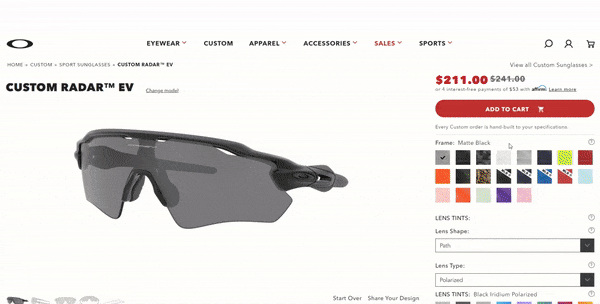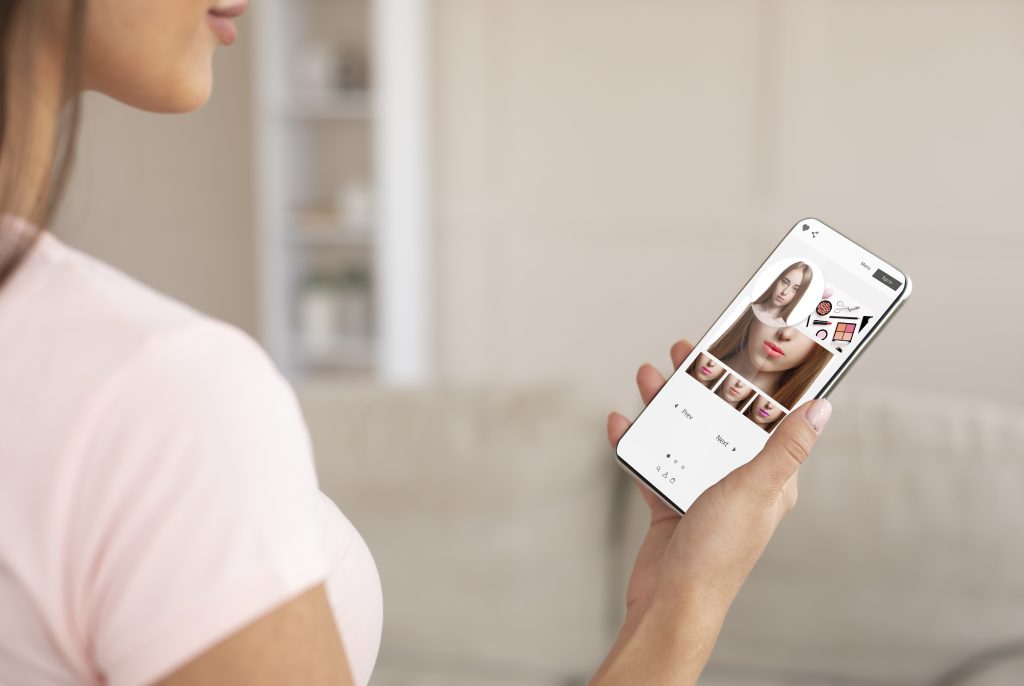
In 2021, personalization was front and center for most leading brands. Customer experience design took on a new meaning as brands embraced mass product customization and hyper-personalization to grow their customer bases and revenues.
This trajectory is expected to continue in 2022. More brands are implementing product personalization across their enterprises to attract loyal customers willing to pay a premium for unique items.
But it won’t be easy to keep up with the latest product personalization trends for 2022. In part, this is because certain foundational marketing elements that personalization depends on will disappear over the coming year.
The death of the cookie, as many are calling it, is seen as a crisis for some and an opportunity for others. Chrome (and other browsers) will start phasing out support for third-party cookies in 2022. This will naturally make life tougher for your organization’s marketing and personalization efforts.
Consider some of the main product personalization trends from 2021:
Organizations that embrace these trends can overcome these new data collection challenges. Brands are pushing ahead with personalization and looking for strategies that can create one-on-one engagement using trust-based data collection. Below, we’ll look at the top seven product personalization trends that will shape 2022.
One of the biggest challenges for brands in 2022 will be building trust by providing products that meet customer expectations to a T. Some of the best strategies for growing revenues and converting more customers into loyal buyers still include accelerating digital transformation, cross-platform data integration, and mass product customization.
The way you apply these strategies will depend on the product, but these seven product personalization and design trends will help you thrive over the coming year:
Tesla became one of the largest car manufacturers this year by investing heavily in product personalization, agile production at scale, and making data-driven design decisions. As only the fifth company valued at over $1 trillion, the brand is now synonymous with customized products and services. In the last month alone, the company saw its valuation skyrocket after the Model 3 became the bestselling car in Europe and Hertz placed an order for 100,000 Teslas.
To maintain this momentum, the organization depends on three customer-centric design pillars:
However, the main differentiating factor is the user-experience design that comes with a Tesla. Drivers can save individualized profiles, which will soon be driven by facial recognition. Tesla also has a completely upgradable dashboard. You can update your Tesla with new features as soon as they become available.
The blurred lines between digital and physical product personalization will continue to shape the future of the automotive industry, especially as other brands try to catch up. For example, Audi recently displayed their Grandsphere concept car, intended to compete directly with Tesla’s Model 3 capabilities.
Today, consumers have more power. Brands that want to foster loyalty from customers must become customer-obsessed. Personalized experiences are no longer enough to retain your customer base. Throughout your organization, you’ll need to adopt an intuitive approach to value delivery. This trend will intensify in 2022, requiring brands to move from simple personalization to individualized intimacy.
Relationship-building transactions will likely depend on delivering an individualized service with your products such as allowing customers to participate in their design. For example, both Ray-Ban and Oakley’s customers can design a pair of sunglasses using any combination of frames, lenses, and monograms or etchings.

Via Oakley
Scaled individualization requires you to:
Physical retail stores have turned into experience centers. Every option you provide for your ecommerce customers should also be available in your physical locations – and vice versa. Additionally, you’ll need to allow customers to switch seamlessly between different digital channels, including mobile shopping experiences.
According to Statcounter, mobile shopping is now the most popular way for customers to access digital services, holding more than 52% of the market share. The other trend to keep in mind is that people now expect brand representatives to be reachable across social media platforms. If you offer product personalization, you must invest in multi-channel servicing. Each digital touchpoint you design should include optimization for mobile, web, and physical interactions.
Artificial intelligence (AI) and machine learning (ML) technologies are now mature enough to drive product and customer insights. While data-driven decision-making isn’t a new strategy, the use of AI and ML takes all guesswork out of the equation.
AI is uniquely suited to understand and quantify a specific user’s preferences. It will then recommend specific types of personalization that will resonate with the individual customer. Until now, most organizations invested in AI to assist with customer support. However, the next major step in AI development is to set these algorithms free and let them take over the responsibility of recommending personalized products.
An example of this can be found in the cosmetics industry. Brands are leveraging augmented reality and AI to recommend different shades of makeup that match a customer’s skin tones. By capturing an image or video of the customer, AI will recommend foundations, eyeshadows, or lipsticks that they can “try on” virtually. AI combined with AR will continue to drive the way brands provide hyper-personalized experiences in 2022.

In the aftermath of the pandemic, luxury brands had to come up with innovative strategies to provide personalized shopping experiences under travel restrictions. Virtualized shopping enabled luxury brands to maintain their exclusive identity and sell products in virtual stores that often leverage photorealistic 3D product renderings.
The virtual shopping experience allows customers to interact with products in an augmented reality environment and receive personalized attention from real assistants.
Combining augmented reality with in-person consultants makes it twice as likely for a luxury brand to make a sale compared to traditional customer service approaches.
Some statistics even show that virtual shopping for luxury brands is helping companies thrive in the current climate.
A survey from 360 Market Research found:
To fuel the continuous drive for customer-centricity in every stage of the product design lifecycle, brands are finding innovative ways to add value throughout the experience. Samsung continues to design products with customers at the heart of each design decision. Meanwhile, Fender is using product personalization and customization to ensure each person can build the guitar or bass of their dreams.
Both strategies add immense value to a customer’s shopping experience. In Samsung’s case, their TV Frame technology becomes a piece of art when the wall-mounted unit isn’t in use. For Fender, modular manufacturing allows the brand to build the perfect guitar design according to each customer’s unique preferences.
Via Fender
Most of the brands mentioned above have been experimenting with product personalization for years and are realizing the benefits from previous investments. Any brand that is just starting this journey will need to get it right from the beginning if they want to succeed.
A product personalization and configuration platform like ConfigureID can help you quickly hit the ground running. The solution integrates seamlessly with your ecommerce platform and enables you to control each personalization option using advanced configuration rules.
With a ConfigureID you can:
ConfigureID works with many top brands, including Oakley, Ray-Ban, and Fender, to deploy premium product personalization at scale.
With our interactive 3D and AR capabilities, you can empower shoppers to co-create and purchase products that reflect their unique needs and style.
It’s clear that the future of ecommerce lies in product personalization and customization. Follow the seven trends outlined in this post to position your brand above the competition while driving brand loyalty and revenue growth.
To see how our product personalization platform can empower your brand, request a demo of ConfigureID today!